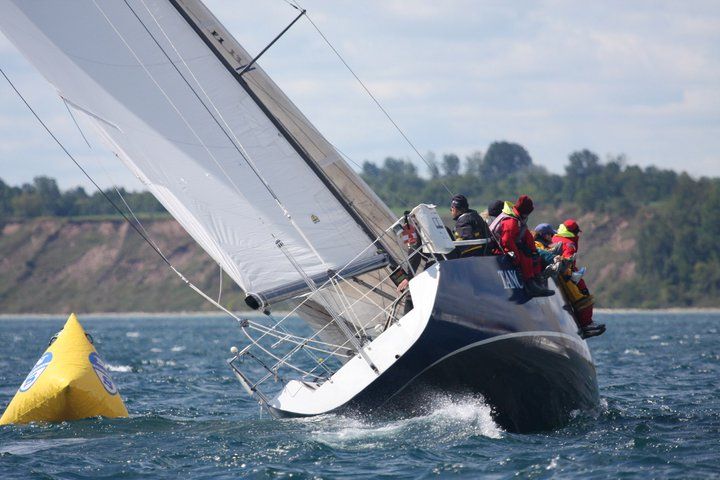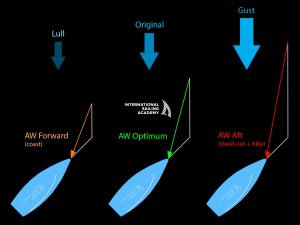

Article collated from excerpts of an article authored by Colin Gowland regarding Handling Gusts and Lulls – International Sailing Academy https://internationalsailingacademy.com/

Many sailors have poor gust response and in gusts, there is a tendency to “fight” the boat with hiking and often too much steering to control power.
In keelboats, we often see the boat heeling too much, the helmsman pinching and employing corrective steers. This leads to unnecessary strain on the boat and crew causing reduced speed and lower VMG.
Much is often said about changing gears in up and down pressure with regards to sailing shape, and while that’s very important, there’s a lot more to learn.
By handling gusts and lulls efficiently, you’ll be working with the boat, not against it and will get big performance improvements as well.
Correct gust response involves – ” Ease, Hike then Trim”
Incorrect Gust response – “Pinch, Hike, Corrective Steer, Stall”
If we find that the gust is from the same direction as the original wind and it is merely an increase in wind speed, the moment it hits, your apparent wind swings aft.
As that happens our objectives are:
1. We need to keep attachment and good flow on the sail, more flow creates lift.
2. We do not want the boat to increase heel as this creates sideways force and drag.
3. We want to apply the maximum amount of body leverage into the boat.
By accommodating our new apparent wind which has moved aft, with sheeting out, we can increase flow on the sail and maintain a constant angle of heel.
Hike as much as is needed to do this – maximizing hiking leverage and if possible sheet out simultaneously to keep the boat heel angle the same. Complete these steps and your boat speed will instantly increase.
Once this new speed is achieved, your apparent wind will move forward again so you’re able to sheet back in to accommodate that. Have you changed the angle? No, because the wind has not changed direction.
In marginal hiking conditions, sometimes just adding weight in is enough to instantly increase the boat speed. In this situation less or even no sheet release is necessary. This is because your apparent wind swings forward so quickly as you add weight, that flow is not lost and the heel of the boat is not affected by the gust.
Correct Lull Response – “Coast and maintain your height”
Incorrect Lull Response – “Chasing”
In lulls, even advanced sailors tend to chase apparent wind around obliterating VMG and slowing them down unnecessarily.
When you sail into a lull, your apparent wind moves forward which is the opposite of a gust. When this happens you should unweight, coast to keep your height and decrease speed.
As in a gust, we don’t want the boat to “feel” the lull and the angle of heel should not be affected. To keep a constant angle of heel means that you’ll need to move your weight inboard. Or just bring your shoulders up depending on the amount of wind decrease.
You can experiment with trimming in tighter to various degrees to reduce drag with the apparent wind forward. Alternatively, you can ease a bit to keep some power and minimize stall risk.
CLICK HERE – more SAILING TO WIN

